Physical therapy
Living & Thriving with Cerebral Palsy
October 6, 2023Written by Katie Martin, Former Schreiber Client
I was born 10 weeks prematurely in 1982, along with my twin brother Adam (who is 14 minutes younger) and was diagnosed with spastic quadriplegic cerebral palsy at 6 months old. Cerebral palsy is a physical condition that affects mobility and posture that for me, was caused by a lack of oxygen and severe brain bleed at birth. I started physical, occupational, and speech-language therapies at Easter Seals (now Schreiber Center for Pediatric Development) shortly after my diagnosis.
In addition to Adam, I also have a younger sister, Laura. Both of my siblings are able-bodied; they do not have special needs. My parents had the same expectations for the three of us; we were expected to work hard and to put forth our best effort with whatever we chose to do. I was not treated any differently as a result of my special needs, which was a gift. Adam, Laura and I have a great relationship. We enjoy spending time together and we give each other a hard time sometimes (like most siblings do). They are supportive of me and vice versa.
For my family and me, Schreiber was a place of hope. Doctors were non-committal about what to expect for my future, while the therapists at Schreiber were determined to help me make the most of my abilities. As a result of my cerebral palsy, I am unable to walk, so therapists taught me to drive an electric wheelchair at the age of four. It was my first taste of independence, being able to move around on my own. I also attended the preschool program at Schreiber as a start to my education. With the support and encouragement of my teachers, Sally Wilbur and Irene Buch, my parents realized that they needed to advocate for me to be mainstreamed in a regular classroom with my typical peers. They did just that and I graduated from Penn Manor High School in 2000 and moved on to receive a degree in Public Relations from Millersville University in 2004.
I always knew that I wanted a career that allowed me to help people with special needs in some way, and joining the Schreiber staff in September of 2007 as the Grant Writer fulfilled that calling. I am honored to be able to work for and give back to an organization that has helped me in many ways. Eleven years ago, I was able to move into my own home and I receive assistance from attendants, who help me with my personal care needs. I have a roommate, my friend, Laura, who I met years ago when we were both Schreiber clients. Along with the support of my family, the support I received from many Schreiber therapists, (including OT, Becky Smith) when I was a client allowed me to realize that even with my special needs, I could lead a productive, fulfilling life.
My diagnosis of cerebral palsy is a part of who I am, but my life is not defined by it. I am a daughter, sister, aunt, friend and camp counselor. I love to spend time with family and friends. I like to do things people do not expect. For example, I “ran” a 5k race with my siblings in 2014, and I got “Believe” and “Hope” tattoos on my arms in 2022. I love to read; Kristin Hannah is my favorite author, and listening to Country, Christian, Pop and Christmas music is my favorite way to relieve stress. I have seen Brad Paisley, Bon Jovi, Darius Rucker, Michael Buble, Rascal Flatts and Zac Brown Band in concert. A perk of needing to use a wheelchair is that it allows you to get great seats at the Giant Center and Hershey Park Stadium. The same thing is true when watching baseball games at Citizens Bank Park (Go Phillies!), Camden Yards (Go Orioles!) and PNC Park in Pittsburgh.
Having special needs can be very stressful. I am stubborn. I do not like asking for help. However, it was important that I learned how to be my own advocate and ask for help when I needed it. Figuring out my attendant care schedule is a constant job that will never end. With that being said, I am extremely thankful for the attendants that help me throughout the day with my activities of daily living, so that I can be as independent as possible. It truly does take a village; I would not be able to do what I do without my support system. I joined a support group for adults who have cerebral palsy last year through Kennedy Krieger Institute in Baltimore, where I have been a patient since 2014. We meet once a month through Zoom, and it is very helpful to connect with people who are going through similar challenges and to get advice.
I am grateful that my job at Schreiber allows me to put my challenges in perspective, so that I can do my best to help the clients who need our services every day. I chose to share my story with you, the Schreiber community, in honor of World Cerebral Palsy Day to illustrate that even though I may have more challenges than other people, I truly believe that having cerebral palsy has helped to shape me into the compassionate, confident, independent, productive, and strong adult that I am today.
If you child has been diagnosed with Cerebral Palsy and you are interested in learning more about how Schreiber’s Pediatric Therapies can help your child visit: http://www.schreiberpediatric.org/therapy-services/
As a nationally recognized pediatric facility, the Schreiber Center for Pediatric Development provides family-centered education and therapy programs for infants, children and adolescents with disabilities, developmental delays, and acquired injuries. Our goal-oriented approach maximizes each child’s ability to function independently within the community.

Limb Girdle Muscular Dystrophy
September 29, 2023What is Limb Girdle Muscular Dystrophy?
Limb Girdle Muscular Dystrophy is a group of muscular dystrophies which can be inherited in various ways. It equally effects males and females and symptoms begin between 8 and 15 years of age. About 2 to 10 out of 100,000 people are affected by this muscle disorder which leads to muscle weakness and muscle wasting of varying severity. Most commonly the shoulder and pelvis muscles are affected and as it progresses the hips, shoulders, arms, legs, and back muscles all weaken. The symptoms are known to progress slowly and while there is no cure the life expectancy of an individual with this diagnosis is generally within a normal range since the heart and breathing muscles are not affected.
How do I know if my child has Limb Girdle Muscular Dystrophy?
The signs and symptoms of people with Limb Girdle Muscular Dystrophy can vary widely. Even among individuals within the same family there is a good chance that the signs and symptoms will not be the same. Since symptoms can begin at any age, it’s important to keep an eye out for these common signs throughout your child’s life:
- Inability to rise from a squatting position without using the arms for leverage
- Toe walking or walking on the balls of their feet
- A waddling gait when walking
- Difficulty running
- Joint stiffness
- Abnormal spine curvature (lordosis/scoliosis)
Because these signs and symptoms are common in other muscular dystrophies, it is critical to see a medical doctor and receive a formal diagnosis so that proper treatment can be obtained. The formal diagnosis is based on symptoms, symptom severity, age at which the symptoms began, and family medical history. Doctors will perform a series of tests including: electrodiagnostic tests, laboratory tests, muscle biopsies, imaging studies, electrocardiograms, and genetic testing to confirm their diagnosis.
What Causes Limb Girdle Muscular Dystrophy?
Limb Girdle Muscular Dystrophy is a neuromuscular genetic disorder that occurs when a faulty gene results in abnormal muscle function. Many genes have been identified as contributing to this disorder so while it can be passed from parent to child, the child also could be the first in the family to have muscular dystrophy.
What are the complications of Limb Girdle Muscular Dystrophy?
While it is rare for Limb Girdle Muscular Dystrophy to affect the heart, lungs, digestive system, or other body systems outside of the muscles, it is possible. Any time the heart or lungs are affected by muscular disorders there is a chance that life expectancy will be negatively affected.
What is the treatment of Limb Girdle Muscular Dystrophy?
While there is no cure for Limb Girdle Muscular Dystrophy there are treatments for it. Treatments range from medications that are prescribed by medical professionals to help relieve symptoms relating to Limb Girdle Muscular Dystrophy to physical, respiratory, occupational, and behavioral therapies to help reduce the process of muscle weakness and wasting. Treatment is individualized for each patient and designed to enhance quality of life.
If you child has been diagnosed with Limb Girdle Muscular Dystrophy and you are interested in learning more about how Schreiber’s Pediatric Therapies can help your child visit: http://www.schreiberpediatric.org/therapy-services/
As a nationally recognized pediatric facility, the Schreiber Center for Pediatric Development provides family-centered education and therapy programs for infants, children and adolescents with disabilities, developmental delays, and acquired injuries. Our goal-oriented approach maximizes each child’s ability to function independently within the community.
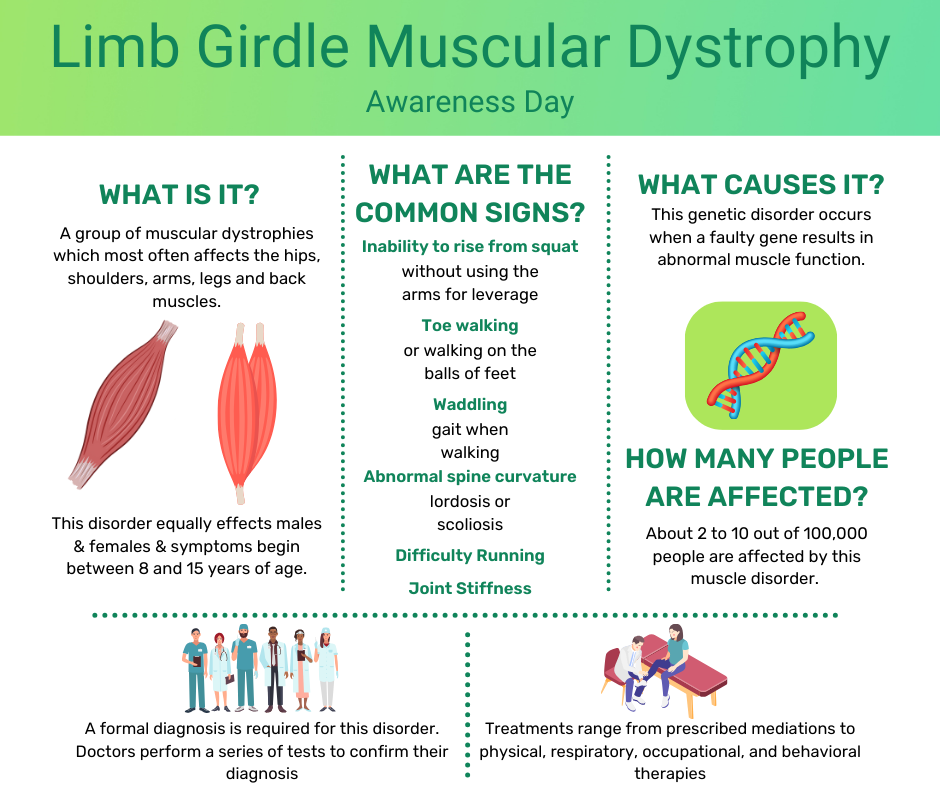
Sam Leon-Durkee: Young man with a plan
April 19, 2022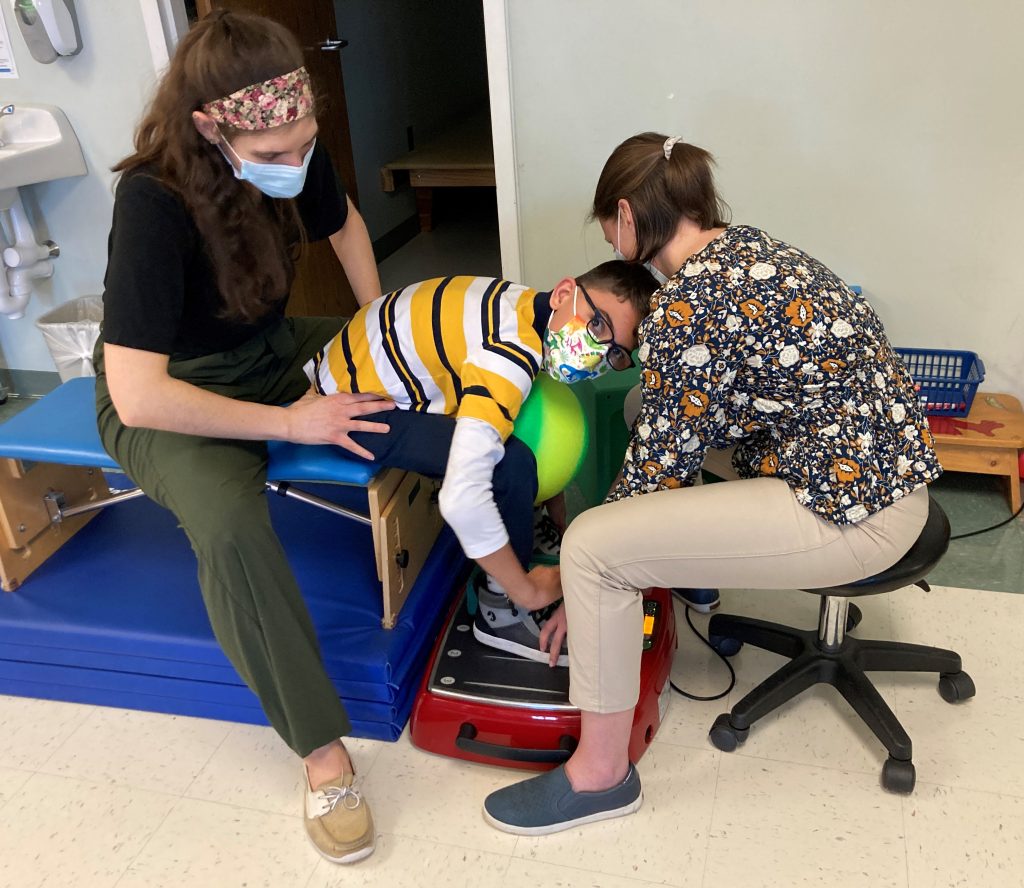
Sam Leon-Durkee started a recent physical therapy session working on a piece of equipment called a Galieleo vibration plate. He sat down on a bench, put his feet on the plate and, with the help of his physical therapist, Rachel Saufley, worked on standing up.
Sam was diagnosed with cerebral palsy at 18 months. He’s 12 now, and does a lot of work to increase his flexibility and mobility. The vibration plate helps reduce the muscle spasticity, or tightness, associated with CP so he can have a more effective therapy session.
Schreiber acquired the vibration plate in December thanks to a grant from the Gamber Foundation. Rachel said she uses it with Sam to help stretch his hamstrings. Sam put it a little differently.
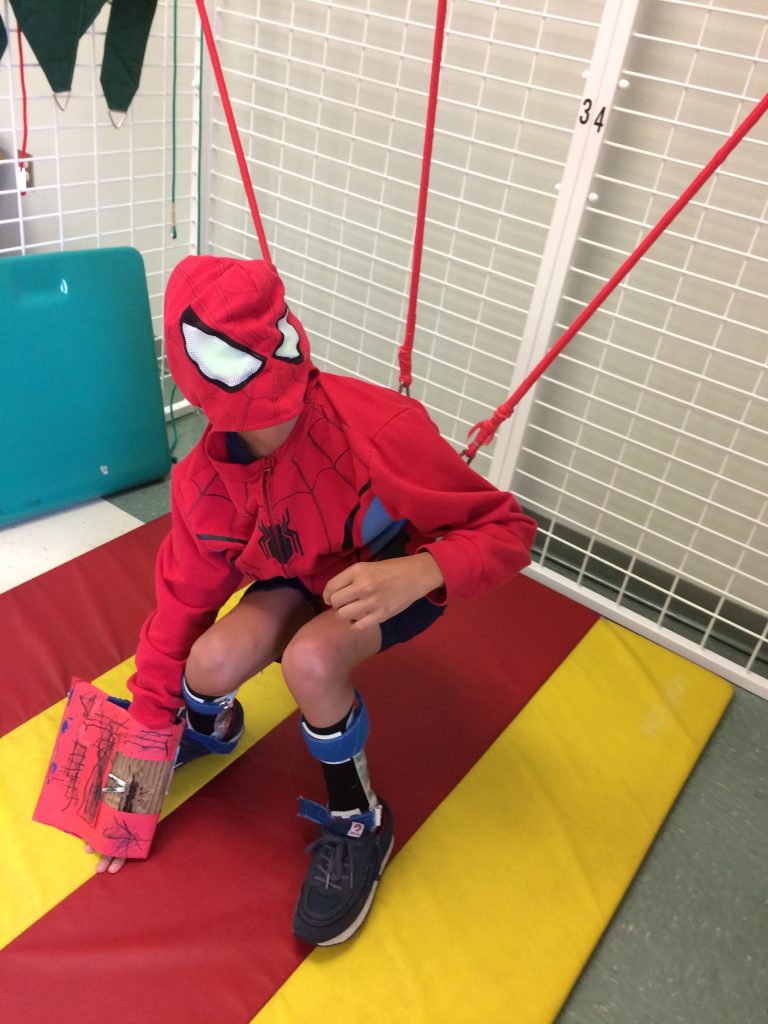
“It’s something new to torture the kids,” he said. “And by torture I mean help.”
He said it like he says a lot of things: with a mischievious smile.
His cerebral palsy makes it hard for him to walk or hold a pencil to write his name. But it has done nothing to hinder his social development.
He’s a talker, a natural storyteller with a vivid imagination and a quick sense of humor. His mom Casey Trone said Sam wants to work at Marvel Comics in New York City.
“I think he’s going to single-handedly write the next Marvel movie,” she said.
That’s the plan right now. For that to happen, there’s still a lot of work to do. Given how far he’s come, though, nobody would bet against it.
Sam was born prematurely in August 2009 and spent five months in the neonatal intensive care unit at Hershey Medical Center. Casey said she started Early Intervention services with Schreiber as soon as she received the diagnosis.
The EI services continued until he was 3. He had a muscle-lengthening surgery at age 4, which helped him make a lot of progress. A year or so later, he returned to Schreiber to resume physical therapy. Around the same time, he started school, first enrolling in Head Start when he was 4 and then starting kindergarten the next year.
“I was a little reluctant,” said Casey, who lives in the Penn Manor School District. “I would have liked to have a little more time for him to develop physically. But he did really well in kindergarten. He’s had an aide with him every year, so the support has been really good.”
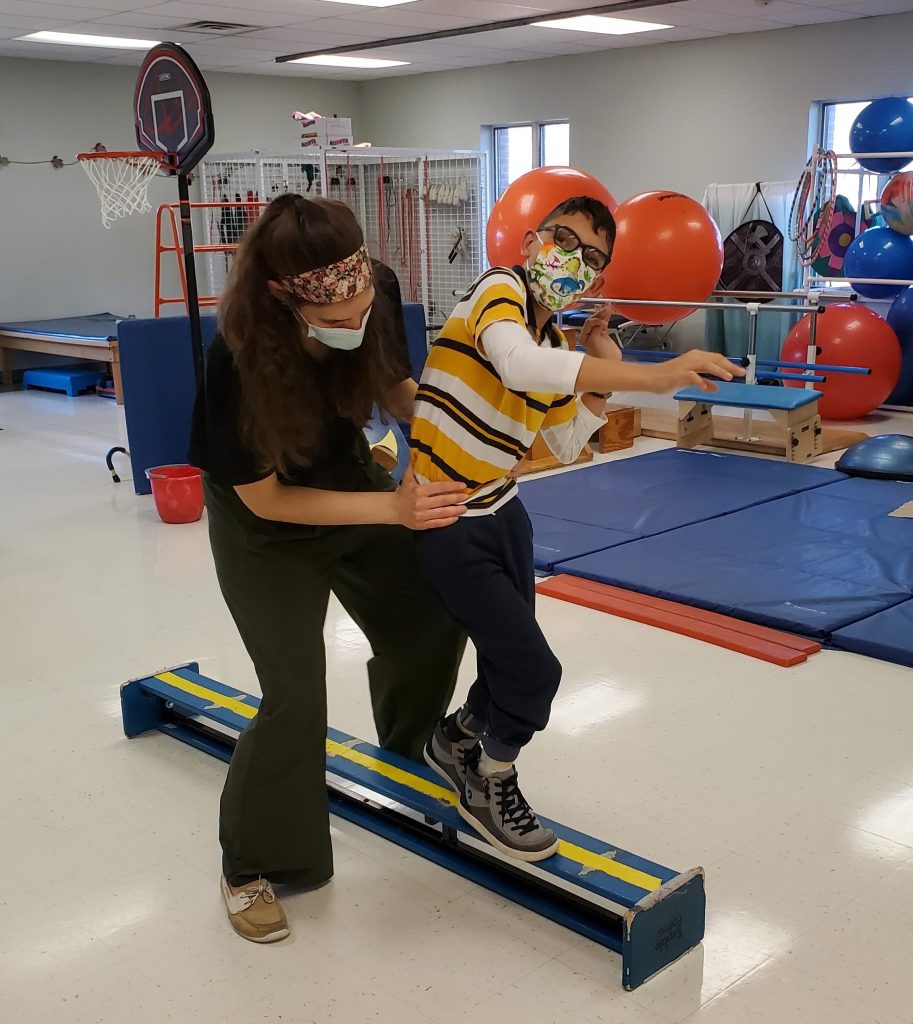
He has continued to do well in school, including his middle school years at Manor Middle School.
“He has shocked me,” Casey said. “I remember when I first got the diagnosis of CP, I had no idea what was going to happen. There are so many different forms of the disease. I went so far as to have weight-loss surgery because I didn’t know whether I was going to be able to take care of him. But he’s doing very well.”
A lot of that she attributes to their experience at Schreiber.
“It’s helped me to understand what is possible and what to do and how to take the next step with him,” she said, her voice cracking and a tear rolling down her face. “My life now is to get him to be the best he can be.”
The physical challenges haven’t been the only ones for Casey, Sam and Sam’s twin sister Isabelle. The twins’ father, Henry Leon-Rivera, passed away in 2016. Two years later, Casey brought Mike Trone into their lives.
“They were just about to turn 8,” Mike said. “When we met the first time, we went out for ice cream. We talked a lot about the ‘Cars’ movies. He’s a smaller guy, and he was even smaller then. But he can talk. He knows what he’s talking about. And he has comedic timing. He’s full of life.”
Now it was Mike’s turn to wrestle with his emotions, and he reached over to grasp Casey’s hand.
“I’ve learned so much from him,” he said finally. “I didn’t know anything about CP when Casey and I met. I guess I had a picture in my mind. And he was nothing like that. Resilience is how he approaches day-to-day life. He’s definitely changed my outlook on the world.”
And now the three-person family is four: Casey and Mike married in 2021. She’s financial coordinator with the Library System of Lancaster County. He’s a Realtor with Keller Williams Keystone. Together, they are rebuilding life as a family. And coming to Schreiber to help Sam become his best self, to fulfill his plans of telling the next stories in the Marvel universe.
“I work really hard every day to give Sam the best life I can,” she said. “And I know he meets me halfway to give his best. We all do what we gotta do, and we’ll get there.”
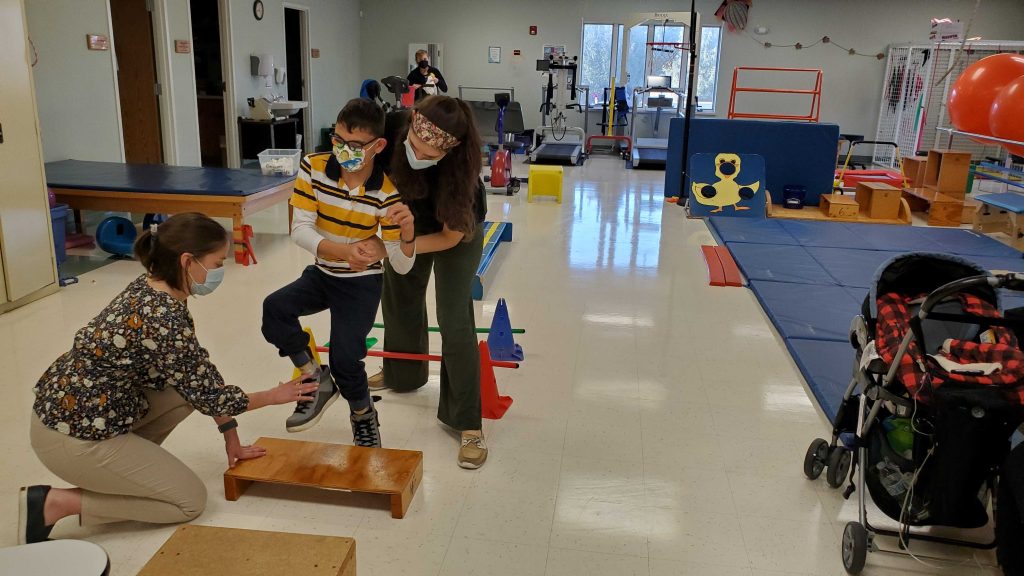
Ellery McIndoe learns to soar at Schreiber
March 29, 2022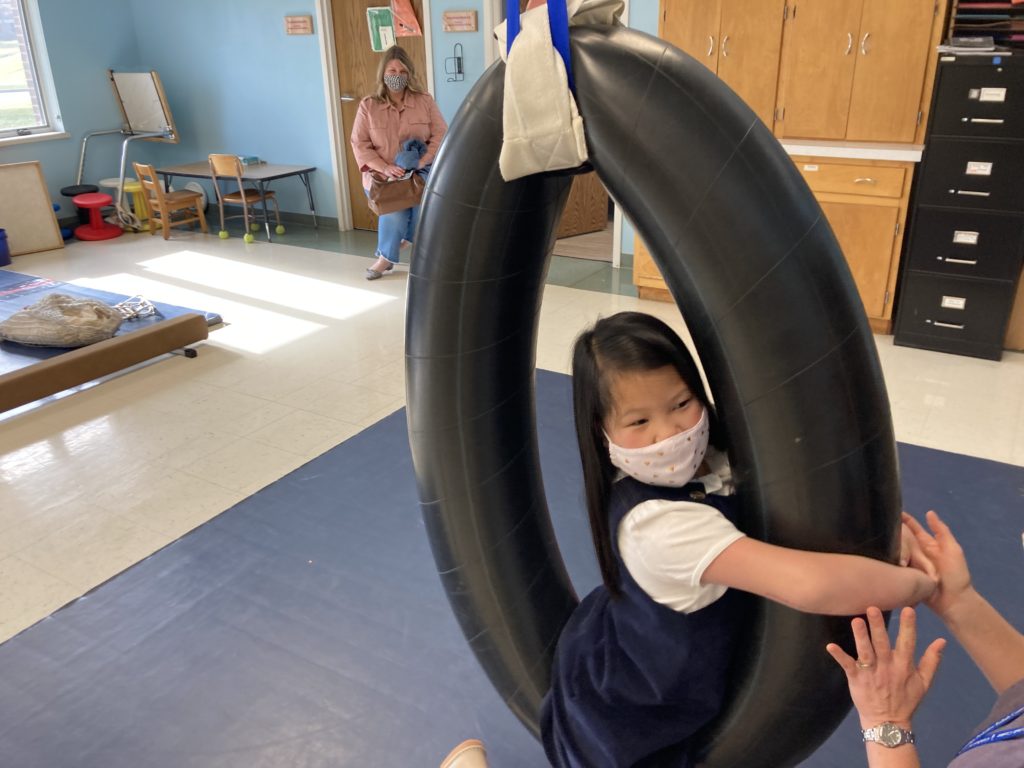
Ellery McIndoe has had challenges most people can’t imagine. She also has lots of personality, a big, bright smile and a ton of can-do spirit. In the scheme of things, the challenges don’t seem to be holding her back from being a happy, active, smart 7-year-old little girl.
For her mom Alison, though, getting to this point hasn’t been the easiest journey.
Ellery was born in China, and she spent the first five years living in the orphanage system that China maintains to care for children the government considers to have severe special needs.
Alison, a single parent, had wanted to adopt a young child from China, and she spent several months looking at the profiles of different children with special needs.
“It was a little scary initially,” Alison said. “I passed her by the first few times. You don’t necessarily know the extent of their situation. It could be a heart condition. It could be blindness. I knew very little about her condition.”
She finally learned that Ellery had been diagnosed with arthrogryposis, a rare condition that developed in utero. The condition causes contractures, where one or more joints become permanently fixed in a bent or straightened position, and muscle weakness. Alison knew Ellery had some surgeries in China but not much else about her care.
She adopted Ellery in November 2019. First, she had to help Ellery adjust to her new situation. Five years old, living in a new country with a new language and a new family — it was overwhelming.
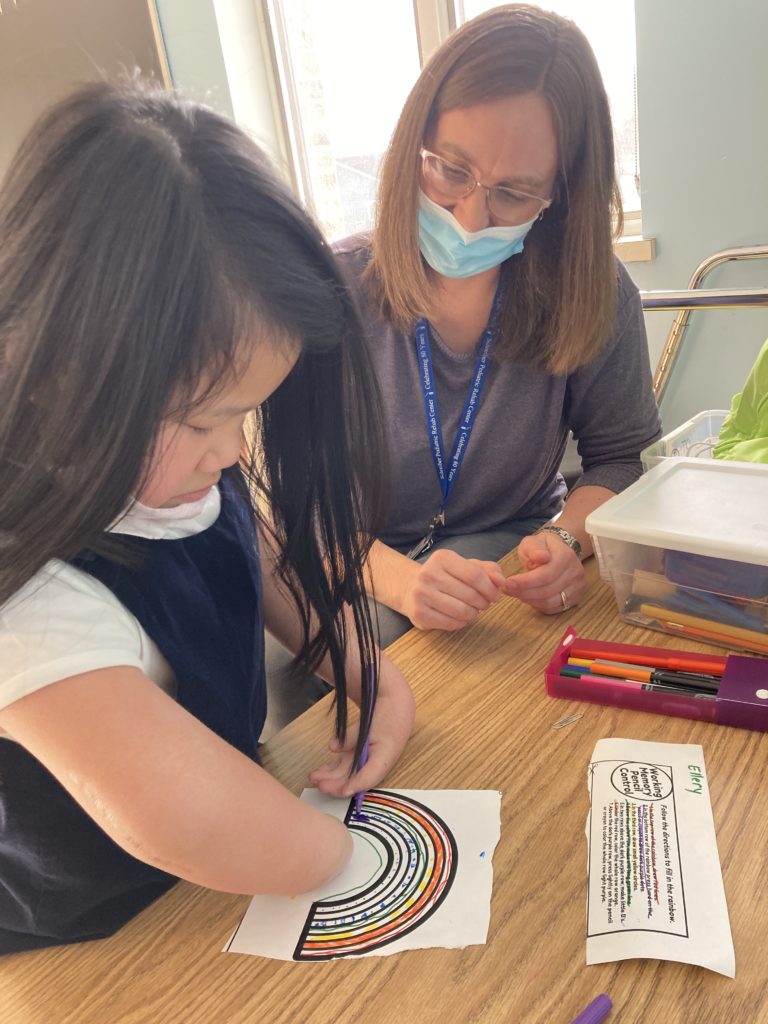
“She was very timid and very frightened the first few weeks,” Alison said. “I could literally not be out of her sight at all. She came to work with me, even meetings with clients, and she would just sit there and pretend to take notes, like I did. Or she would make pretend phone calls. She likes to do whatever Mama does.”
Then Alison went to work finding the medical care Ellery needed, starting with surgeries at Nemours Children’s Hospital in Wilmington, Del. In the summer of 2020, doctors operated on her right elbow, wrist and thumb, with the goal of giving her more flexibility in the affected joints and improving her fine motor skills so she would better able to do daily tasks like feeding herself.
They started coming to Schreiber for services about a year ago. Ellery receives occupational therapy with Amy Mostellar and physical therapy with Christen DeSarro.
“In OT, it’s really a struggle to figure out ways to help her care for herself,” Alison said. “She has fingers, but they don’t move a whole lot. She’s learned to adapt. She can do a lot with her toes: She can color, and she can almost tie her shoes. She loves to swim.
“Just the fact that she sees she can do these things gives her so much confidence. … She just runs with it. She beams.”
Ellery’s newfound confidence shows up in little ways. Like when she smiles and laughs and squeals, “Push me higher,” on the swing in OT.
When she first started at Schreiber, she had trouble grasping her hands together to hold on while she swung. Now? No problem. Those little fingers are stronger.
Or the way she can maintain her balance in PT.
“When she started, she fell all the time,” Alison said. “I worried about her. I thought I might have to get her a helmet, because when she falls, she can’t really catch herself with her arms. Now, she rarely falls. Her balance is so much better. She can walk up the steps now by herself.”
Alison paused.
“I’m still close by though,” she added, with a smile.
She described the progress as slow and steady.
“You almost don’t realize it’s happening. But then you see her on the swing and you think: ‘She couldn’t do that before.'”
The shy, quiet 5-year-old has given way to a confident, bubbly 7-year-old, a foodie (she loves anything spicy) who enjoys sewing (with her feet!) and play dates with friends.
And her experience at Schreiber has played an important part of that evolution.
“(Schreiber) is a wonderful place, and we’re so thankful this is here. This is a joyful place, and Ellery fits right in.”
For the Kiss family, dedication mixed with gratitude
March 4, 2022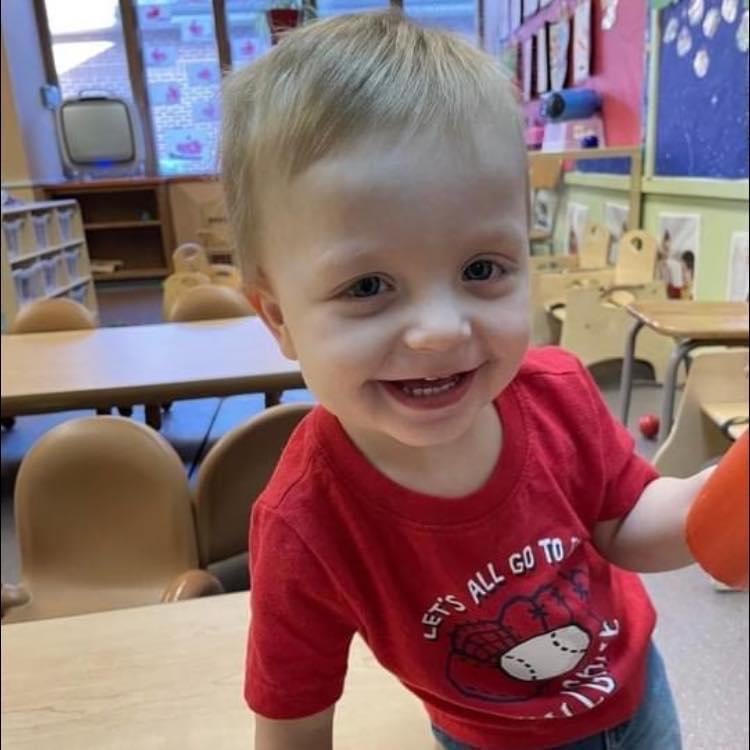
The complications for Colton Kiss started the moment he was born. His mom, Tara Kiss, said doctors used vacuum extraction to help with delivery.
The procedure “caused four intracranial brain hemorrhages,” Tara wrote in an email, “as well as a blood clot on his cerebellum, which is the part of the brain that controls movement, balance and speech.”
Colton was quickly transferred from Lancaster to Children’s Hospital of Philadelphia, widely known as CHOP, where he spent the next two weeks in the neonatal intensive care unit (NICU). Tara, living in York at the time, stayed with her mother, Cathy Kiss. Cathy lives in Manor Township, and Tara drove back and forth to Philadelphia every day for those two weeks to be with Colton.
When Colton was 4 months old, a follow-up MRI showed the blood clot and hemorrhages were gone, but the clot left behind an area of damage on the cerebellum.
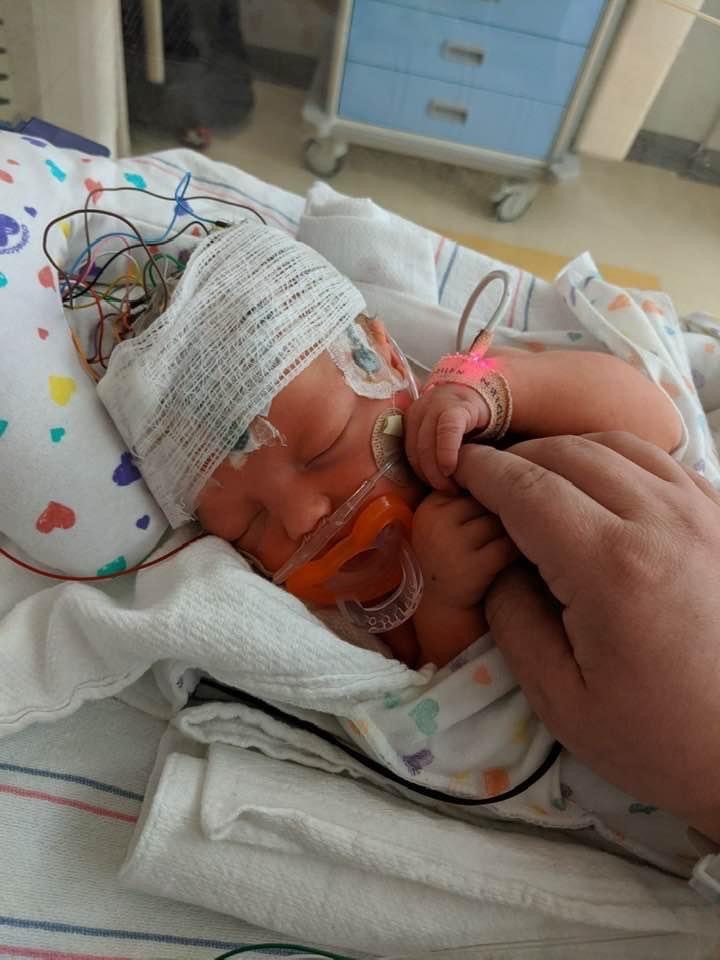
“We learned from his neurologist that we were looking at a long road of obstacles as that part of the brain is so important to everyday life — walking, talking, motor skills…,” Tara wrote.
CHOP referred them to Early Intervention and outpatient pediatric therapy. After doing some research and talking with friends, Tara knew she wanted to start services with Schreiber. Cathy’s best friend’s father, Joe Finger, had volunteered here with a group of other residents from St. Anne’s Retirement Community. Cathy also knew Michele DeBord, sister of Schreiber President James DeBord.
“Hearing about (Joe’s) experience and knowing Michele was so passionate about Schreiber, we were really comfortable (starting at Schreiber),” Cathy said.
Colton was born in March of 2020. Tara moved to Lancaster in December of that year to start services at Schreiber.
“We were immediately welcome by the Schreiber staff who are now pretty much our family,” Tara wrote. “Lisa (Moore, at the front desk) took us in under her wing and connected me to Jen Bachman to get Colton evaluated and started right away. We have been working with Miss Christen (DeSarro) for PT, Miss Kim (Martin) for OT and Miss Cassie (Glick) for speech. When we started, Colton was unable to sit unassisted, unable to feed himself solid food, unable to say any words at all.”
That was where Colton was in early 2021. Today? He still receives all three therapies, and he’s enrolled in Schreiber’s Circle of Friends Academy child care program, in the Toddler Room.
“Whether children are born healthy or born with already known obstacles, every child deserves a chance to be helped, and Schreiber gives every child a fair chance at a normal life.”
Tara Kiss, Colton’s mother
“It has not even been a year yet,” Tara wrote, “and he is now able to sit, stand alone and take his own steps on flat surfaces. He can feed himself any type of food he desires. He is working on his words and attempting new words almost daily. We are only in the beginning of this journey, but because of the dedication from our Schreiber family, Colton has a chance to live his life as normal as possible.”
Which is why Cathy reached out just about a year ago at this time offering to help with our first Cup O’ Cards fundraiser. The idea for Cup O’ Cards was simple: We bought a bunch of gift cards from local businesses, stuffed them into some sponsored coffee cups, then raffled off the cups.
“I heard about it from Michele, I looked at your website, and I decided to jump right in” by donating a card-filled coffee cup, she said.
Cathy, who runs her own home-based accounting business, CLK Accounting and Payroll Inc., reached out to a number of clients and asked them to donate money to buy gift cards or to donate cards from their business. We quickly added her CLK Accounting mug to the other cups, and it turned out to be popular with raffle ticket buyers.
She was happy to participate in the second Cup O’ Cards raffle, which starts March 28, and she plans to do two cups this year, including a Mystery Cup filled with a collection of surprise gift cards.
“I’ve already raised more than $600 in cash, which I’ll use to buy the gift cards,” Cathy said, “and collected two donated items for the Mystery Cup.”
Last year, with Cathy’s help, Cup O’ Cards raised about $27,000. This year, with her help again, we hope to raise even more. And that would be make a proud grandmother pretty happy.
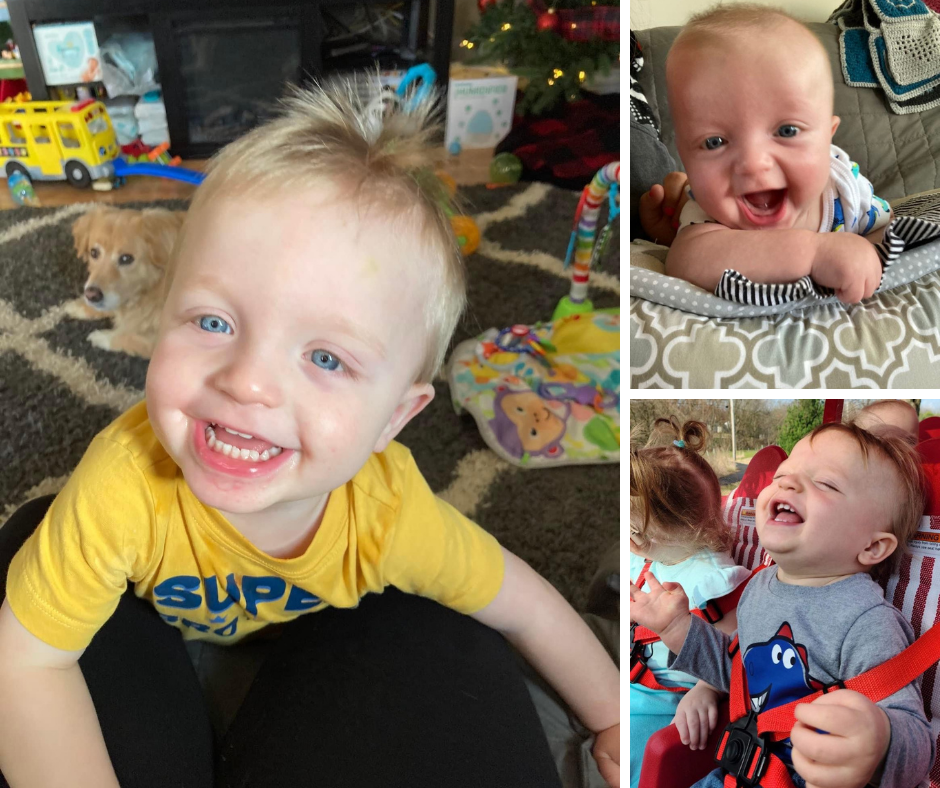
“That’s my boy,” she said. “And I see what Schreiber does for kids with my own eyes. (Colton) didn’t sit up until he was maybe 10 or 11 months old. He’s very delayed. To see his progress with the therapists is what I love about Schreiber.”
Tara said it this way in her email:
“… Whether children are born healthy or born with already known obstacles, every child deserves a chance to be helped, and Schreiber gives every child a fair chance at a normal life. That is something I will always support. We are forever grateful for Schreiber and the care my son receives. From his teachers at Circle of Friends Academy down to all of his therapists, thank you all for loving my son!”
Winter Olympics come to Schreiber
February 2, 2022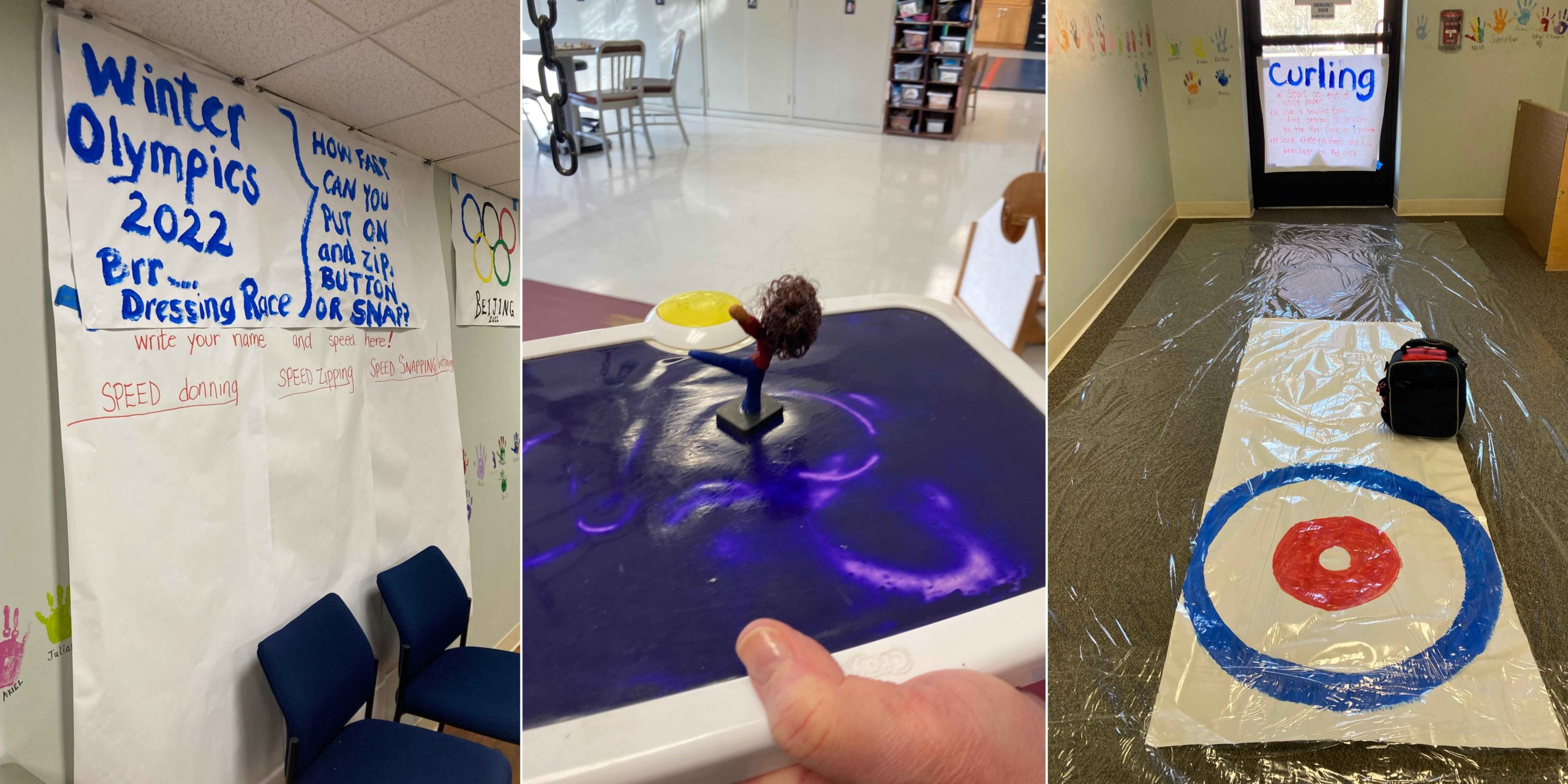
The Winter Olympics begin Feb. 4 in China. On the other side of the world, right here in Lancaster County, we have our own version of the Games at Schreiber.
Over the next few weeks, while you’re here at the center, you might notice the unusual Olympic-inspired decorations. There’s the Speed Dressing arena outside of Occupational Therapy, where competitors will be testing themselves on Speed Donning, Speed Zipping and Speed Snapping. Next to that is the Curling hallway. There will be several areas for Olympic hockey, including table top Knock Hockey and air hockey along with a hockey net (or at least a drawing of one taped to a wall – video below) to shoot pucks at, and hand-held games for to compete in figure skating.
And the main event will almost certainly be in the Activities of Daily Living Room, home to the luge and Bobsled track.
These are mostly the work of OT Bernie Hershey, who regularly finds some of the more outside-the-box creative ways to add fun to therapy sessions. All of the activities incorporate therapy work into the game playing. And therapists in OT, physical therapy and speech-language pathology are using the games.
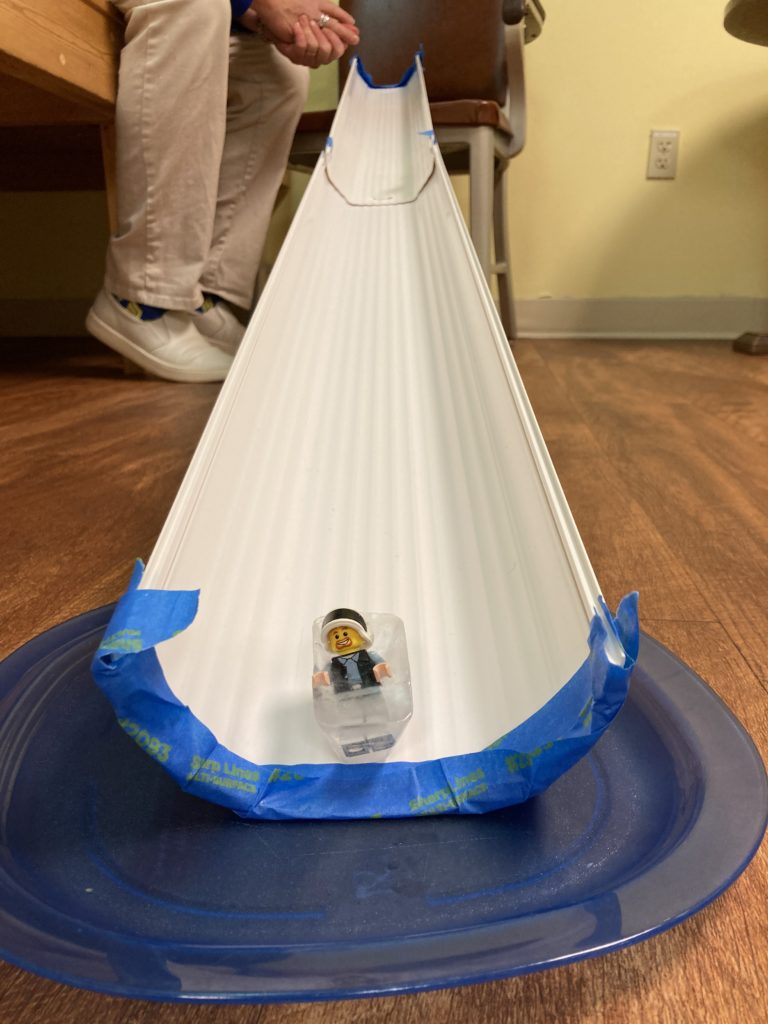
Occupational Therapist Bernie Hershey has organized a series of Olympic-style events for kids to include in their therapy for the next few weeks during the Winter Olympics. Here, a bobsledder finishes a run.
“Anything that breaks up the normal routine and adds a little fun helps,” Bernie said. “I like looking for ways to include what’s going on in the world with our therapy.”
Speed Dressing helps kiddos work on how quickly they are able to dress themselves, often a goal for many of the kids we see. Curling helps with gross motor skills. Knock Hockey and air hockey works on eye-hand coordination. The luge and bobsled races and some of the figure skating helps with pinching and grasping.
Deanna and Zoey learn to live with Rett
May 20, 2021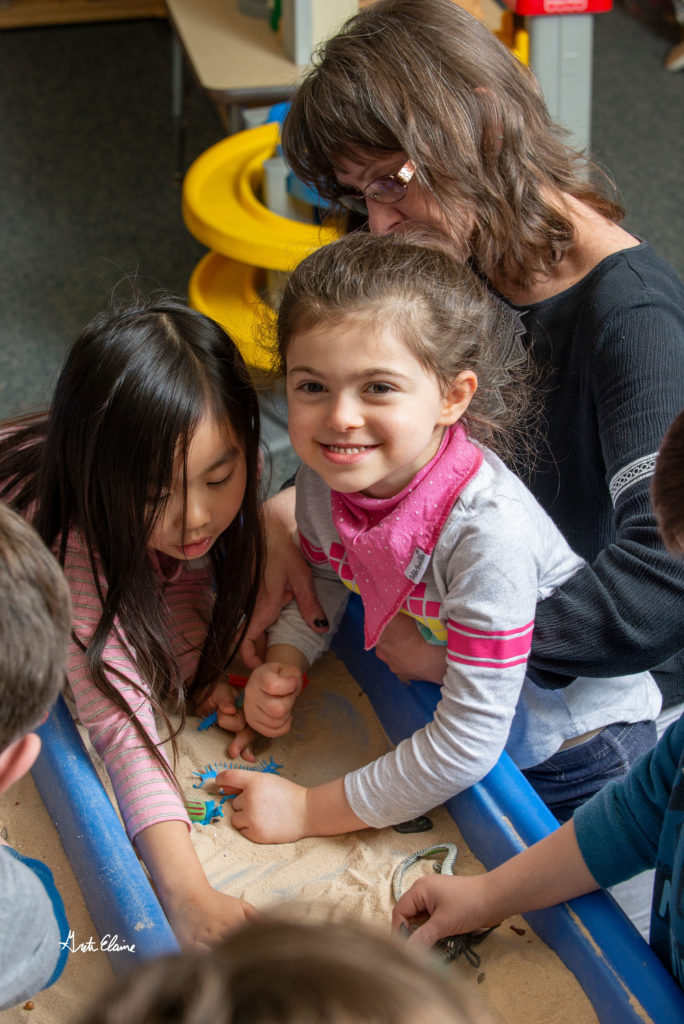
Zoey Adair
Zoey and some of her preschool friends play in a sandbox in a photo from 2019. Zoey has learned many different skills at Schreiber as she and her family deal with her diagnosis of Rett Syndrome, a rare genetic disorder.
Deanna Adair has been a Schreiber physical therapist for five years. Her daughter Zoey attended Schreiber’s S.T.A.R.S. preschool and Circle of Friends Academy and is now in kindergarten. Zoey also receives therapy services. She has Rett Syndrome, a rare neurological disorder affecting mostly girls. Individuals with Rett appear to develop normally until 6-18 months of age, after which they go through a regression and lose acquired skills. Zoey was diagnosed at 21 months of age. She began to display gross motor and language delays by 9-10 months of age, and began to lose her fine motor skills around 18 months.
Zoey, who will turn 7 in July, is unable to walk independently or talk, and has lost the ability to use her hands functionally or chew food. She communicates using an Eyegaze device and a yes/no board. She eats pureed foods and drinks thickened liquids, and has a feeding tube for supplemental hydration.
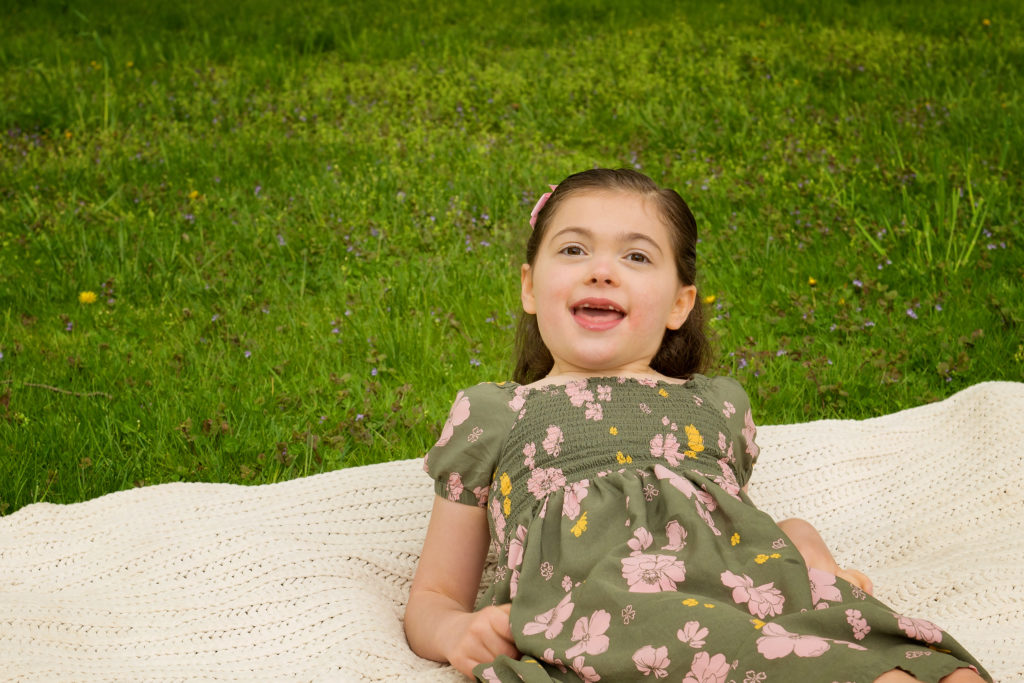
She also has scoliosis and obstructive sleep apnea, for which she uses a BIPAP machine. Rett Syndrome is not a degenerative disorder (brain cells are intact), and has been shown to be reversible in a lab setting, indicating that it may be curable in humans.
Deanna recently wrote a Facebook post to mark the fifth anniversary of Zoey’s diagnosis. She agreed to share it here.
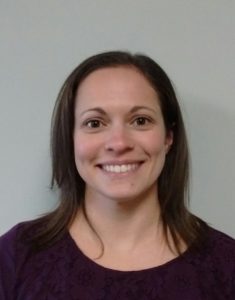
I can’t believe it’s been five years since we received Zoey’s Rett Syndrome diagnosis. It was Friday the 13th. I was on my way from my old job to pick her up from day care at Schreiber and answered the phone call as I was getting on the highway. I thought they were going to tell me that further testing was needed, because they only agreed to test for Rett “for peace of mind,” since I asked, but that’s not how it went. They gave us an appointment at the CHOP Rett clinic three days later and told me not to look it up on the internet. Guess what I spent the entire weekend doing?! After two days on the couch, I had to pick myself up and do what needed to be done for our girl. After all, she was the same sweet, beautiful little girl she had been before the diagnosis.
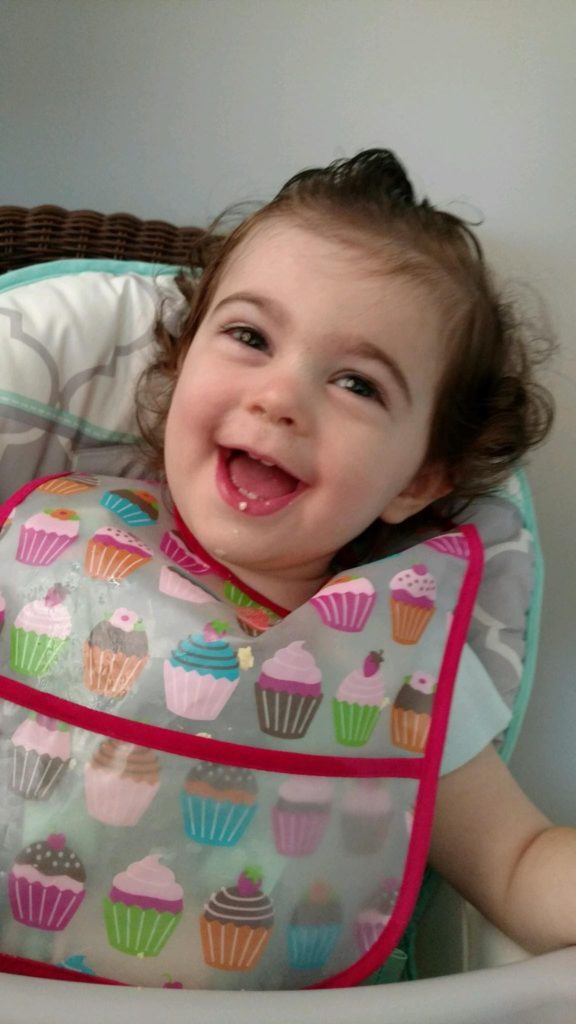
We have learned a lot since that day, and we are determined to give her the best life possible and find ways for her to learn and experience as much as she can. She is such a sweetheart, has a sense of humor, is smart, works hard, and is just a happy girl. Life has not been easy, and we have our tough times, but she is worth it!
Lately, we have been working on things like a special needs trust for her future, which can be overwhelming to think about, and the older she gets without there being a treatment or cure, the harder it is, too. But our girl has had an amazing year in kindergarten, having fun and learning to read and write using eye gaze, and we are so proud of her!
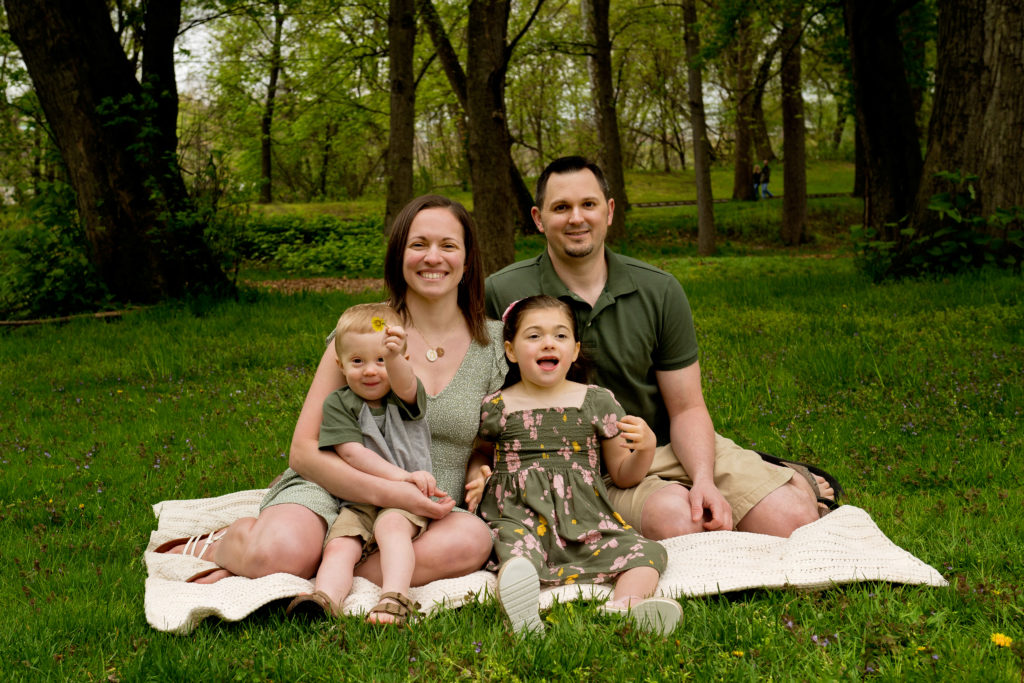
Denisha Roberts: A health care hero
January 29, 2020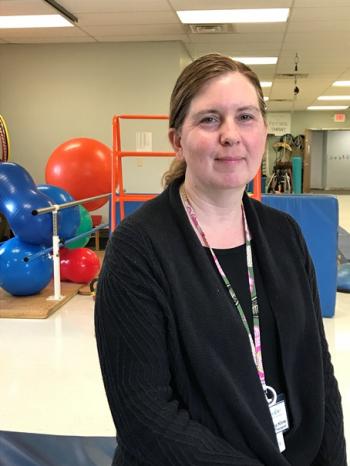
The Central Penn Business Journal recently named more than 30 leaders and organizations as finalists in their 2020 Healthcare Heroes awards, and Schreiber Physical Therapist Denisha Roberts was recognized in the category Therapeutic Care Hero. Here is a testimonial letter from Schreiber parent Jackie Randazzo, whose daughter Grace has been in Denisha’s care since Grace was 2.
Our daughter, Grace, was born in Korea with cerebral palsy. Grace came home to us in 2004 when she was 11 months old. We knew we were adopting a “waiting child,” but we really did not know much about cerebral palsy and what Grace’s disability would mean for her or for us as a family. We received a referral to Schreiber Pediatric and began our journey with Early Intervention and Schreiber. Grace had a few therapists early on and when she was a toddler, then we met Denisha Roberts. We immediately made a connection with Denisha, and she became a strong source of support and a wealth of knowledge.
At first, Denisha came to our home for physical therapy, helping us learn how to adapt our home and support Grace within the home environment. We worked with her to learn what Grace needed to grow to her full potential. Denisha taught us, and helped me personally remember to stand back and let Grace do things for herself. She has helped me learn to empower my child and was not afraid to have the difficult conversations needed to help me do “my work” so Grace could do her work. Denisha always had a way of keeping me hopeful and accountable for our family and for our child.
I have learned so much from Denisha over the years, and we have become a team that is constantly learning to unravel the mystery of Grace and what she needs and, most importantly, how to motivate her.
Denisha was always willing to go above and beyond.
When Grace started horseback riding lessons Denisha was happy to come to the barn to help us learn how to help Grace with riding. On another occasion, Denisha took us to a ball pit so Grace could practice falling and building her protective responses. Over the years, she has gone to amusement parks with us to help Grace have a fun and safe experience. We visited countless playgrounds so Grace could learn to navigate with the other children.
Denisha Roberts is a kind and loving person who is totally dedicated to her work and to helping children. She is completely invested in the families in her care. Denisha is a mother of four, a board member of Brittany’s Hope and a host family for foreign exchange students. I remember a time that Marietta had experienced some flooding, and Denisha called to see if we or any neighbors needed help moving furniture upstairs. She and her four children came to help neighbors. That is just the kind of person she is.
Denisha has become more than a physical therapist to Grace. She has become a part of the family and a trusted friend. When you have a child with special needs it can at times feel lonely and overwhelming. I always knew I had Denisha to help us, and that support has been priceless. She has truly been priceless lifeline and friend for us after all these years. Grace is now 16, and we have known Denisha for more than of 14 years.
We feel truly blessed to know Denisha Roberts.
Jackie Randazzo and her husband Martin live in Marietta.
First steps on a journey of recovery
December 18, 2019Four-year-old Jack Teyssier works through a series of exercises each week at Schreiber. His physical therapy sessions include strengthening and stretching for his lower left leg, some core work and some myofascial release by Schreiber therapist Lisa Stachler-Volk.
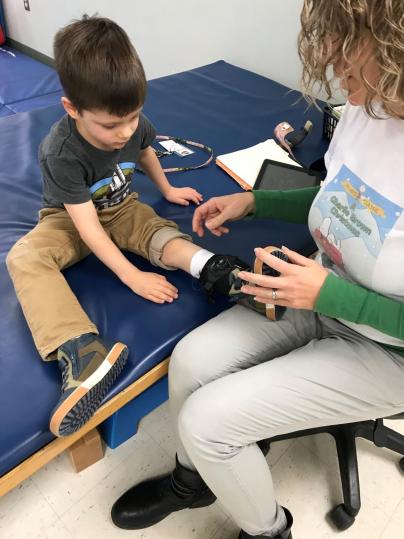
Jack Teyssier, 4, finishes his physical therapy session with Schreiber PT Lisa Stachler-Volk.
It’s hard to tell what exactly Jack is dealing with until Lisa puts some kind of black brace-like device on Jack’s left ankle.
Jack has one of the rare disorders therapists at Schreiber see from time to time. In this case, he has myofibromatosis, a condition that causes benign tumors to grow anywhere in the body.
According to the National Organization for Rare Disorders, most cases occur in young children and there can be a familial link. Jack’s mother Kara Teyssier said she had them on her leg and back; they were surgically removed when she was a baby. Her youngest son, Levi, also had one inside his cheek that was treated through chemotherapy and surgery.
It hasn’t been so simple with Jack.
“He has quite the medical history,” Kara said.
While Jack did his exercises with Lisa, Kara went through the list of Jack’s issues.
When he was born, he was diagnosed with pyloric atresia, an obstruction in the part of the stomach that leads to the small intestine. Doctors at Children’s Hospital of Philadelphia repaired that through surgery, and they also found the first his benign tumors.
At one month, Kara said she and her husband, Ben, noticed Jack’s left foot was droopy. Another of these tumors had developed and was pressing on a nerve in his leg.
So Jack went through a course of chemotherapy, and Kara said most of the tumors have shrunk or disappeared. But the one in his leg had caused permanent damage to the nerve. and Jack had lost the ability to flex his foot normally.
From the time Jack was 7 or 8 months old, Schreiber therapists began working with him at home. That lasted about a year and a half, until the Teyssiers decided he was doing well enough with a brace on his left leg.
Over time, though, his doctors wanted to try and restore more flexibility in his foot. They recommended another surgery, this time to take a tendon from the bottom of his droopy left foot and move it to the top of the same foot.
That surgery happened in March 2019, and he started coming to Schreiber for physical therapy in April.
Lisa has worked on helping him walk better. Before the surgery, the brace kept his foot in a neutral position to help him walk. But he couldn’t flex his foot at all.
“The surgery helped,” Lisa said. “He couldn’t lift his foot at all when we started. Now, he can keep his foot in a neutral (not drooping) position without the brace.”
She has been working on improving the strength of his left leg; his foot tended to roll and he would walk on the side of his foot. He’s also better able to flex his foot up and down. How far he will eventually progress isn’t known.
He can run around and play just like any other 4 year old. He rides a bike without training wheels. When he walks, you can’t even tell he has any kind of a problem, Kara said.
“We have been pleased with his progress,” Kara said. “At home, he doesn’t even wear the brace a lot of the time. Long term, we don’t know if he’ll have to keep the brace. Time will tell what happens as he continues to grow and get stronger. We’re blown away with how far he’s come.”
Schreiber therapy makes difference in Vietnam
October 17, 2019In May, Denisha Roberts took her second mission trip overseas with Brittany’s Hope, a Lancaster County nonprofit that serves families and orphaned children, primarily in Vietnam and Africa. During her travels on this trip, Denisha worked with a 12-year-old boy named Quan. As we do in our therapy work here at Schreiber, Denisha’s visit changed Quan’s life. We talked recently about her trip. The interview has been edited for space and clarity.
Denisha Kline, left, with Quan, one of the many children she worked with during her trip to Vietnam in May.
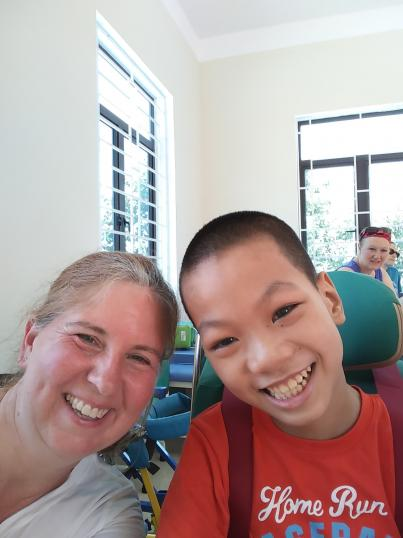
Dan Fink: We talked earlier when you were getting ready to leave on this mission trip. You’ve since gone. I just wanted to hear a little bit about how the trip went.
Denisha: The trip was amazing. We stopped at a couple different orphanages in Vietnam. We started in Ho Chi Minh City and traveled from there to two central locations in Vietnam and then to Hanoi in northern Vietnam.
At the one location, there were quite a few kids who had special needs. There was recently a capital campaign done through Brittany’s Hope to build an adaptive living quarters and get some therapy equipment for these kids. That was my favorite part of the trip because there were about six kids that had special needs, with significant motor special needs. We were able to educate the staff on how to use appropriate equipment for those kids. My favorite part of that piece of the trip was a young boy named Quan. He was about 12 years old. He was recently brought to the orphanage by his grandmother because she was no longer able to care for him. Prior to coming to the orphanage, he would spend his days when she would go to work lying on the floor in their small living area. He never had the ability to sit unless somebody was able to hold him.
I’m not sure where his parents were in this picture. His grandmother could no longer care for him and meet his needs, so she brought him to the orphanage hoping that he would receive some care there. We brought him to the adaptive living quarters, and through the help of a translator, we were able to talk to him. Sweet boy. Very quiet, soft spoken. Very serious young man. Had a lot of muscle contractures. Couldn’t sit up on his own, couldn’t really roll on his own.
Dan: Did he have a diagnosis?
Denisha: He was probably never seen medically. My pretty good best guess would be cerebral palsy. We asked him if he wanted to sit up; he said yes. He was very fearful about sitting, so we slowly brought him up into sitting on the mat table, and then we asked him if he wanted to sit in one of the adaptive wheelchairs that were donated. He said yes. So we transferred him to a wheelchair and really monitored him because he had not been sitting, just making sure that he was OK.
Dan: It can be unsettling for a kiddo who has been lying down most of his life to be in that upright position.
Denisha: Yes. Right. So once he was in the wheelchair, he had the biggest smile on his face. He was so excited to be sitting without somebody having to hold him. So I handed him a playground-sized ball and asked him if he could throw it to me. And he just looked down at his hands because his hands had never really been free to play because he had always been lying on the floor or being held. We helped him. He picked up his hands off the tray and held the ball and threw it. Then he realized he could do this. So he was playing ball a little bit with this big smile on his face. He got tired pretty quickly and went back to his room.
Later that evening, all the kids at the orphanage had a big celebration and did different skits that they had been practicing and songs and dances and games.
Dan: Just for you because you were visiting?
Denisha: Because we were visiting. We had a big buffet meal and a celebration with them. The children with special needs were not involved with this, for the most part. So I went into Quan’s room and asked if he wanted to come out and join the celebration. He said, yes, he did. We got the wheelchair, positioned him, went out. He had the best time. He was laughing, and talking with some of the other kids and the caregivers. He joined in, the kids would push his wheelchair around to the different locations. You could tell he was really enjoying himself. He got tired pretty quickly.
The caregivers took him back to his room after a few hours. I went in to check on him, and, with the help of one of the caregivers, who had a translation device on her cell phone, I was able to tell him I was really proud of him for trying new things. It can be a little scary to try new things, but his caregivers now know how to do some of the things we had done. And hopefully he will continue to work on sitting and using his hands more and doing some of the stretches we had given him to do. He smiled and said through the translator, today is the first day he was ever included in an activity. And it was the first time he was truly happy.
Quan was pretty articulate and very social and aware of what was going on around him and really craved the interaction with the other kids. And it was neat to be able to show the caregivers how it was so simple to include him in some of the activities.
Dan: Culturally and philosophically, the idea of including kids with special needs like Quan in group activities, they didn’t think about that?
Denisha: They didn’t think about it, plus they never had the means to be able to do it, unless you’re carrying some of these children.
Dan: So having a chair helps.
Denisha: Having a wheelchair makes a big difference. Otherwise, there would be no opportunity for him to be included. And for kids who are still living with families, there’s nobody who can stay home with them. There are no schools that have special equipment to accommodate the kids, or at least none that I’m aware of. It’s just much more difficult for these families. And medical care is hard for some of these families to afford.
Dan: Tell me a little bit more about some of the other things you did on the trip. You were there for how long?
Denisha: Almost three weeks. It was very hot, very humid. It was fun. We delivered some soccer equipment for some of the older children, mostly boys who enjoy playing soccer. We help the kids work in the gardens, plant coconut trees. We took two groups of children on field trips.
Dan: So these were not all special needs kids?
Denisha: No, not all special needs kids. We dedicated some houses to some families so that the mother could keep her children, because the mother didn’t have living arrangements for the children to stay. That was fun. We visited a large government-run orphanage and did some case studies with a physical therapist there and talked about some tips on working with children with autism, because they didn’t really have that bag of tricks or education to know how to help with those kids. At the large government-run orphanage, there were probably between 300-400 or more kids with pretty significant special needs. That was a little overwhelming, but you kind of just do what you can do to leave everything in a better position than when you got there.
Dan: What would you say you ended up taking away from the trip? Anything new that you learned?
Denisha: I learned a lot about the culture. It was just fun to work with the kids and give attention to some children who maybe don’t get a lot of attention because the caregivers are so busy with large groups of children. I think the best part was being able to share ideas and discuss therapy ideas with staff, and for them to be able to apply it for the children who were there. From that, we realized it was probably something we want to do frequently so I’m looking at getting some therapists to go back every year.
(laughs)
But the kids are amazing. They’re resilient. They’re willing to help each other out. They have amazing dreams. My sponsor daughter in Kenya wants to become an artist. My sponsor son wants to become either a lawyer or a police officer. These kids are going to college. And they are making these things happen.